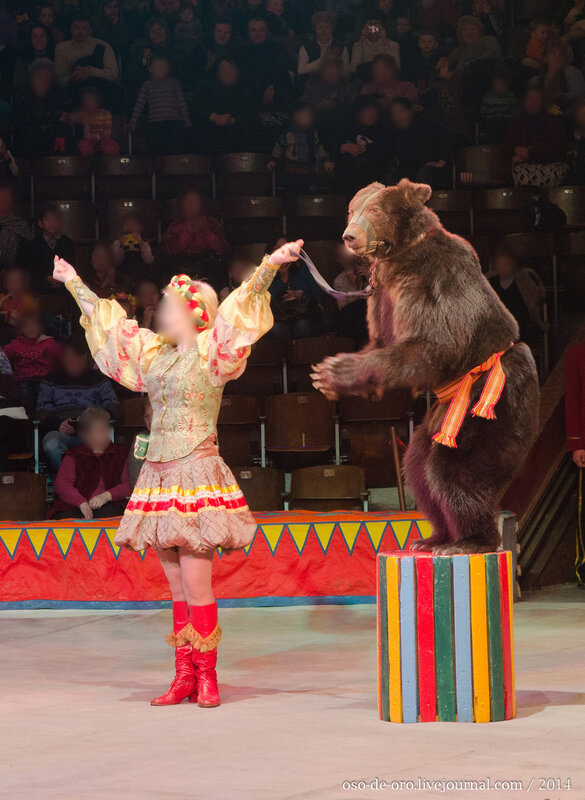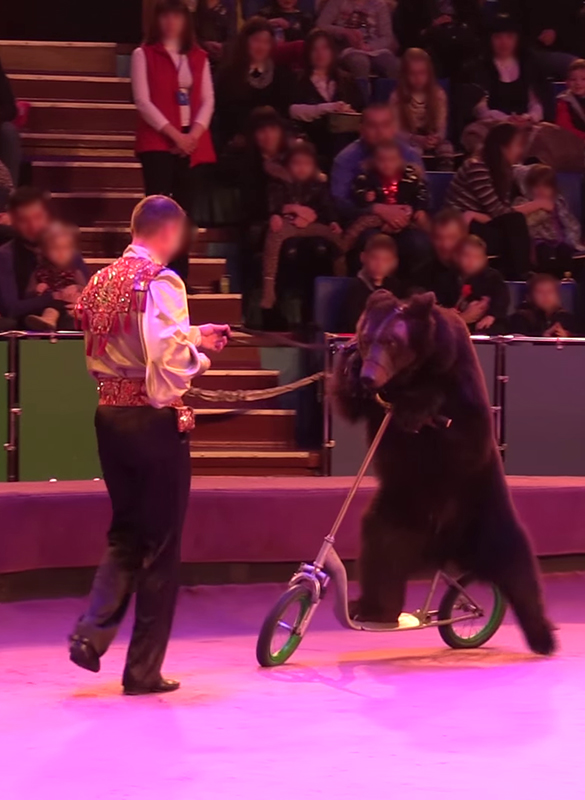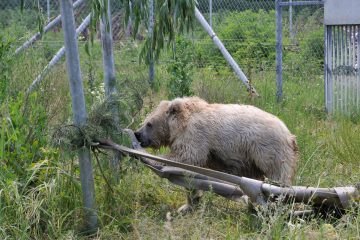Lord let my son live long enough to see that mountain torn down
Austerity Blues – A Silver Mt. Zion
In the essence of a person, as a social being, there is a desire to impress other people. Pleasant bonuses to the delight of the audience include monetary rewards, growth in social status and protection from the authorities. And, like any sphere of human activity, the art of impressing other people is under the pressure of competition.
No one will remember the first people who «harnessed» animals to the action of performances, but everyone knows about Ancient Rome 1. To demonstrate influence, military power, and wealth, the Romans spent crazy money and dragged thousands of animals to the Circus. According to the script, lions ate Christians and trained elephants danced in the arena of the Colosseum 2. The Roman Empire fell, but the tradition only took root through centuries and gradually acquired a mass character.
The commercial circus with animals as we know it finally took shape in North America in the late 19th century thanks to Phineas Barnum in the form of the «American Museum» 3: animals performed tricks, and a menagerie was constantly active in the Museum. Mr. Barnum was also the one who broke the bottom in the quality of life position and morality. In the performances at the Museum, it was for the entertainment of visitors that snakes were fed live rabbits.
Wandering buffoons (pronounced «skomorohy») with tamed bears have long been popular on the territory of modern Ukraine 4. Since the 18th century, audiences have gathered for performances with the participation of animals at the more or less stationary Kyiv contract fair.
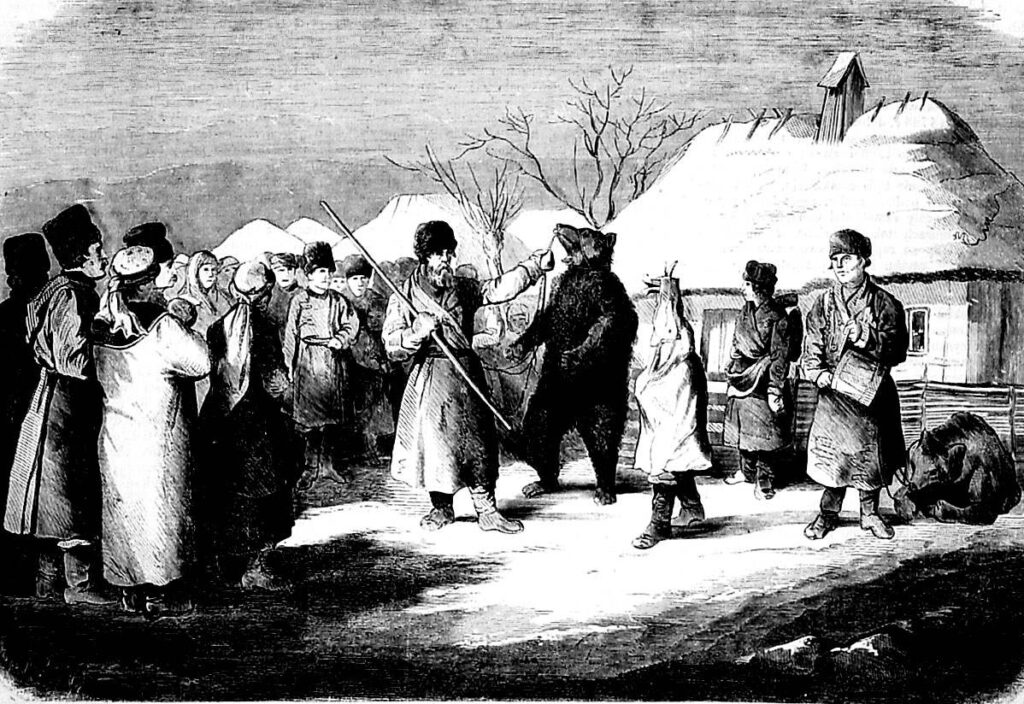
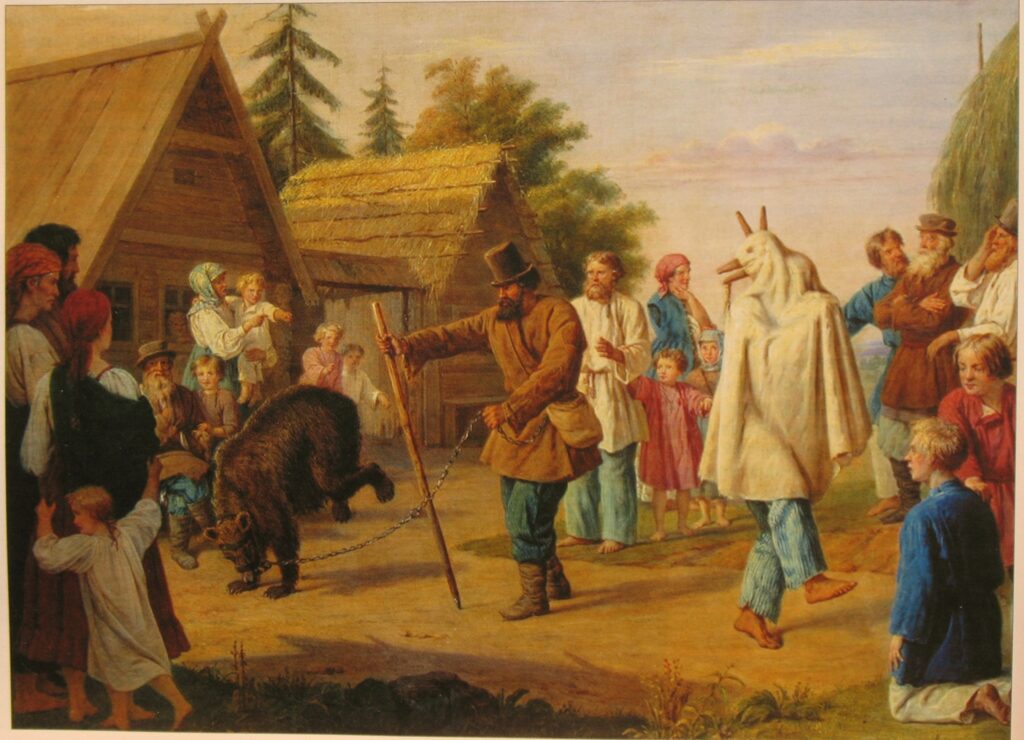
Bears in the wheel of exploitation between niedżwiednicy 5 (woodcut, Illustrated Weekly, 1865) and shrivelled (Franz Riess, «Skomorohy in the village», 1857).
Tamtejsi Rusini małe niedźwiadki z legowisk, gdy srogiej matki nie ma, porywają, dopóki siły im braknie w ciele niedojrzałym albo słabym mięśniom przyrodzonej krzepy. Poskramia się pojętne misie różnymi sztukami i na różne sposoby tresuje. Siła rozumu słucha, zmyślności się poddaje, dzika moc ulega ziemskiemu bogu. Zmuszane są klaskać w takt i uczone, żeby tańczyć do wtóru głośnej piszczałki. Oto harmonia dźwięków porusza serca zwierząt i skłania je do tanecznego ruchu. Niedźwiedzie z wielkim zapałem słuchają melodii, świętej muzyce ulega dziki zwierz. Uczą się wzorem człowieka rozmaitych sztuczek, niepomne swej siły i swej natury. Powstają na rozkaz z pyskiem wyciągniętym do góry, z postawy ludzi przypominają. Ruszając pośladkami, naśladują rozpustne tańce, kiedy hula swawolna zgraja.
The local Ruthenians kidnap little bear cubs from their lairs when their fierce mother is away until they lack strength in their immature bodies or weak muscles in their natural strength. Intelligent bears are tamed using various techniques and trained in various ways. The power of reason obeys, it submits to ingenuity, the wild power submits to the earthly god. They are forced to clap in time and taught to dance to the sound of loud pipes. The harmony of sounds moves the hearts of animals and makes them dance. The bears listen to the melody with great enthusiasm, and the wild animals succumb to the sacred music. Like humans, they learn various tricks, oblivious to their strength and nature. They stand up on command with their muzzles up, resembling humans in their posture. By moving their buttocks, they imitate the debauched dances of a crowd reveling.
Sebastian Klonowich, «Roxolania», 1584, rows 721-740
The use of bears in travelling shows at one time reached such a scale of cruelty to animals and danger to people that they were gradually banned both in the Polish-Lithuanian Commonwealth and in the Russian Empire. Predators were allowed to be used only in stationary circuses.
In 1903, Petro Krutikov opened the largest equestrian circus in Europe, «Hippo-Palace», in the arena of which not only horses performed but also trained predatory animals 6. The soviet union took the paradigm of «animals in the service of people» to the absolute, and predators under the leadership of TPO «Soyuzgoscirk» («UnionStateCircus») already «entertained» soviet audiences in the ugly performances «Bear Riders» or «Tiger Riders».
According to the inexorable laws of nature, «nothing comes from nothing». After the collapse of the soviet union, the Ukrainian circus with animals lost its scope but kept its momentum thanks to the tradition of consuming junk. With the growth of citizens’ consciousness and the pressure of the tax system, purely characteristic features emerged: stationary circuses refused, without exception, to keep wild (large, predatory) animals on the balance sheet and switched to contract services with individual entrepreneurs. There are no animals on the balance sheet – there is no pressure of conscience and hatred under the condition of keeping.
The pressure of civil society and European integration later forced the authorities of some large cities to prohibit the placement of mobile menageries and tents on their territory, and in 2017 amendments were made to the Law of Ukraine «On the Protection of Animals from Cruelty» which prohibited them 7. Developing a draft law on banning spectacular events with animals has begun 8 9.
Losses in profits and contracts hurt representatives of the circus «small business».
Synochok and Lyubochka
A family of circus artists from Nizhyn (Chernihiv Oblast) devoted fifteen years of their lives to performing with animals and kept a small menagerie in their private yard. Yevheny and Valentyna chose the bears as the highlight of the show, for demonstration in the «Evening with Bears» number.
Modern young parents understand this very well and bring their children to all circus programs with great pleasure. After all, the circus arena is not the only place where children can see a monkey or a fox, a bear or a raccoon with their own eyes. And large exotic animals cause a real explosion of enthusiasm in the small audience.
«Lions, bears and other animals in «Extreme fun», 18.03.2016, «Photographs of old Lviv» resource
Synochok (Synok, which means «Son») was born on February 25, 2010, to owners unknown to us and then lived for eight years in a family of circus artists, Valentyna and Yevhen raised him with their own hands. The bear was used for shows and performances, he performed balancing tricks and rode a bicycle. All life was on wheels. And his home was a metal cage of four square meters, which the owners built in the same private yard.
Part of the performance «Evening with Bears» was a demonstration of the «baister», which was usually played by a bear. A few-month-old baby was brought to the stage, carried around in a circle and allowed to be touched by the audience. Since the cubs grew quickly, different ones were used for the show every year. Lyubochka (Lyubasha, Lyubonka, which is the different kind forms of «Lyubov» human name, meaning «love») played exactly such a role at the beginning of her «career», but the artists fell in love with her and they kept her for themselves. Lyubonka was born in a zoo in Volyn on January 30, 2016. According to cruel logic, she was taken away from her mother at a very young age to be sold. It is known that Lyubochka is Nastya’s sister, who currently lives in the Bear Sanctuary Domazhyr 11.
It was very difficult for Lyubochka. She was under constant stress because she was separated from matter too early, and an adult bear lived nearby in a nearby cage and Lyuba was afraid of him. Bear cubs spend two to three years with their mother in nature and avoid strangers’ adult bears, which can kill them in nature.
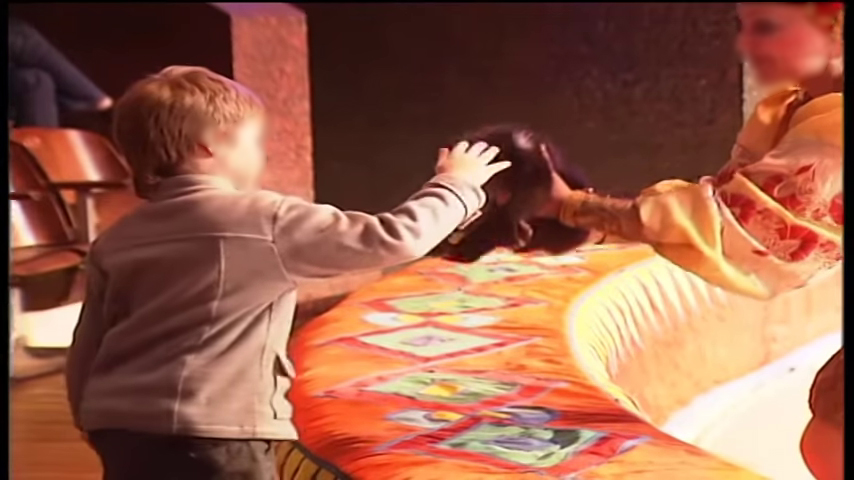
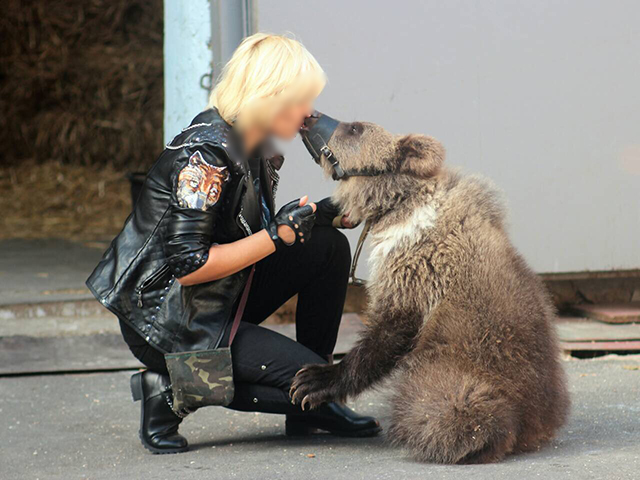
Fortunately, the owners were unable to continue the performances with predators and on September 17, 2018, they voluntarily handed over both bears they owned at that time to our Foundation for maintenance. Paradoxically, the owners of the animals felt a strong emotional attachment to the animals, especially to Synochok. Yevheny had a nervous breakdown due to stress and tension at the time of the legal transfer of the animals.
But, in our opinion, love and ignorance in no way legitimize violence against nature and animals and distortion of their essence.
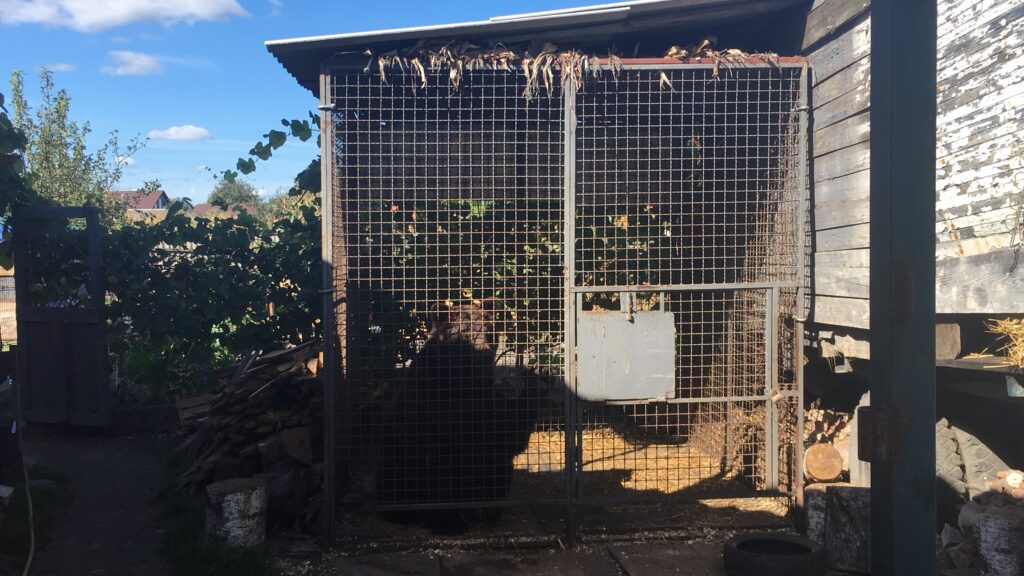
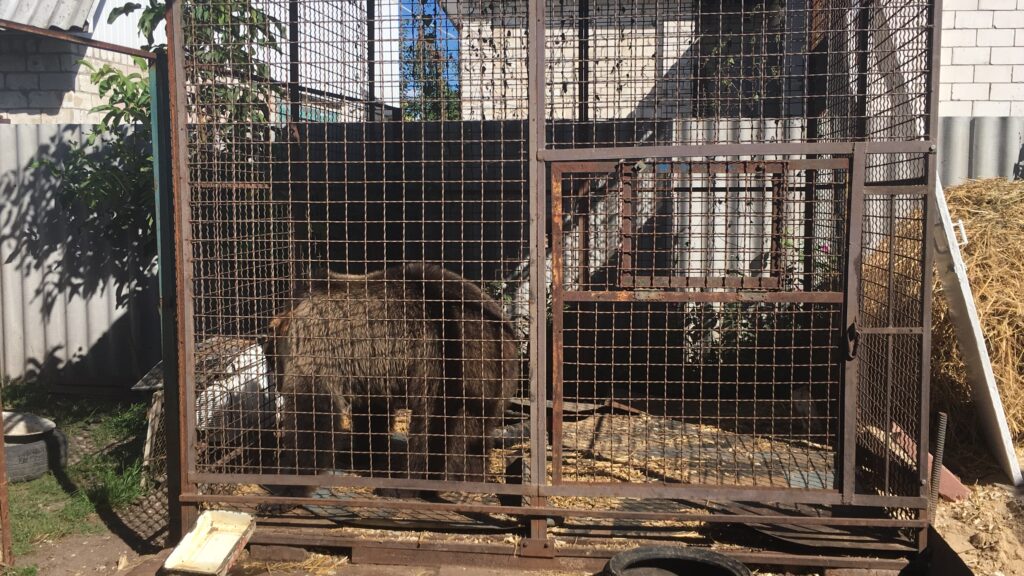
The enclosures in which Lyubochka and Synochok lived, Nizhyn, 2018, photo: CO «ICF «Save wild»
When we saw Lyuba for the first time, she was constantly screaming and jumping in the enclosure. And even after years of living in White Rock, we observe stereotypical behaviour disorders in Lyubochka. At first, Lyuba was afraid of everything and constantly hid in the den. Then we socialized her with Mykhasyk. Until now, the happy couple has lived together. Myhasyk is sterilized, because we do not breed bears, but this does not prevent love.
Lyuba turned out to be a lady with a steel character and grew into a free and beautiful she-bear.
Veterinarians discovered that Synochok had serious heart problems as a result of living in a cramped enclosure. He also damaged his teeth through metal bars. Therefore, we paid a lot of attention to his treatment and he still regularly receives supportive drugs.
After arriving at the shelter, Son did not dare to go out alone into the enclosure. He was scared. Therefore, we waited for the scheduled visit of the dentist and after the treatment, we took him to sleep under anaesthesia in the enclosure. He woke up on the grass under a tree, where he saw his own trees, grass and leaves for the first time.
As a reminder of his circus past, Synochok still has a habit of «clapping his paws» when he wants attention from the staff because it is possible to take a bear out of a cage, but taking a cage out of a bear is extremely difficult.
We are extremely happy every time we manage to change the situation by keeping wild animals in captivity. Step by step, an active civil society is forming in Ukraine, which considers barbaric outdated traditions unacceptable. The relationship of people to people is calibrated from a young age by the attitude towards animals. People, as empathetic, social beings, cannot grow up to be adequate citizens, or members of a progressive society, having as a moral imperative cruel, inhumane treatment of other living beings or the tradition of slavery and suppression of their will. We know from a clear example what happens to a society that forgets about humanism.
Used sources
- https://famous-trials.com/animalrights/2604-animals-and-humans-a-brief-history ↩︎
- https://www.thedodo.com/captivated-a-brief-history-of–394381912.html ↩︎
- https://www.theatlantic.com/entertainment/archive/2017/05/how-pt-barnum-helped-the-early-days-of-animal-rights/525489/ ↩︎
- https://culture.pl/ua/stattia/skomorokhy-hlumtsi-ihrtsi-spivtsi-ta-inshi-predky-ukrayinskoyi-bohemy ↩︎
- https://www.wilanow-palac.pl/niedzwiednicy.html ↩︎
- https://tsirkova-studiya-yunist12.webnode.com.ua/products/%D1%96stor%D1%96ya-tsirku/ ↩︎
- https://24tv.ua/tsirk_bez_tvarin_shho_oznachaye_zaborona_vikoristannya_zviriv_u_shapito_n1130363 ↩︎
- https://w1.c1.rada.gov.ua/pls/zweb2/webproc4_1?pf3511=71740 ↩︎
- https://komekolog.rada.gov.ua/news/main_news/76109.html ↩︎
- https://oso-de-oro.livejournal.com/331047.html ↩︎
- https://www.bearsanctuary-domazhyr.org/ua/our-bears/our-bears/bear-nastia ↩︎
